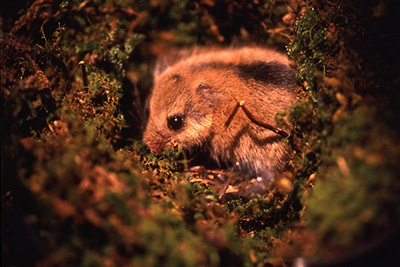Support projects so far
Support project 2022
Indonesia
1.Securing the sea turtle nesting populations of Selaut Besar Island, Indonesia
Annually, 3 species of sea turtles, which are an endangered species, nest throughout the year in the Simeulue Islands in West Sumatra. In Indonesia, the eggs of sea turtles are protected by law. However, the eggs are considered to be delicacies, and have become the target of smugglers. In addition to conducting patrols, we are holding adjustment council meetings in order to deepen the understanding of the residents.
Turtle Foundation/Broad Region/Multi Countries
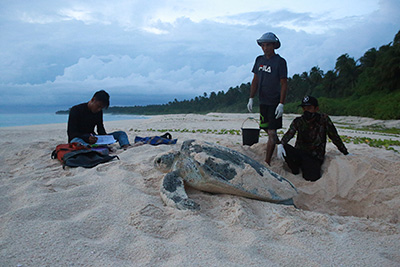
2.Ulu Masen Forest Biodiversity Conservation and Ecosystem Services Protection by Community Rangers in Aceh, Indonesia
The Ulu Masen Forest in Aceh province is inhabited by a variety of living creatures, including the Sumatran Tiger and Sumatran Elephant. However, its biodiversity is threatened by activities such as poaching, illegal tree cutting and gold prospecting. To solve these problems, we are cultivating rangers among the residents of the community, and attempting to coordinate relations with the government.
Perkumpulan Rincong/Indonesia
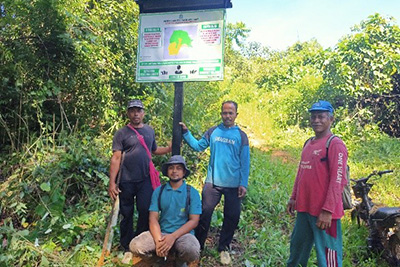
3.Strengthening the Sustainable Ecosystem Management in the Key Biodiversity Area of Kao, Halmahera Island, Indonesia
The Kao Bay in North Halmahera is an area with abundant biodiversity that is the home to dragonflies,frogs and 56 species of birds, The surrounding mangrove ecosystem supports the livelihoods of the nearby residents. However, it is being degraded by illegal tree cutting and poaching. Strengthening of environmental management is being attempted through working to increase the knowledge of the residents concerning the ecosystem and through rule making.
Burung Indonesia/Indonesia
4.Protection of Tapanuli orangutans in Batang Toru Ecosystem, Sumatra, Indonesia
The Batang Toru Ecosystem of North Sumatra is an area with rich biodiversity that ranges from hilly lowland tropical rainforests to rugged mossy sub-montane forests. It is the only habitat on earth for the endangered Tapanuli orangutans. It faces the problems of poaching, and the local ranger organization is working with the government to provide training to the local communities, and conducting joint patrols and protection activities.
Yayasan SCORPION Indonesia/Indonesia
5.Siamang Conservation Project – Sumatra
Although the Siamang gibbon has been designated as an endangered species, almost no protection activities have been conducted. Siamang gibbons that have been illegally sold as pets are taken into protective custody and nursed back to health in a rehabiltation program. Afterwares they are returned to the wild and activities are taken to strengthen the population.
The Aspinall Foundation/Indonesia
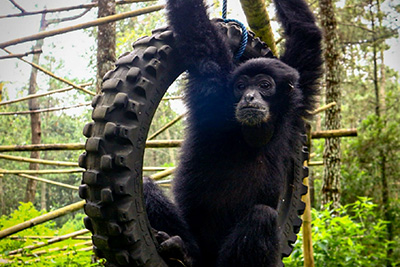
6.West Java Ecological Restoration Program
Protection activities for rare populations in the Gunung Gede Pangrango National Park and the Halimun Salak National Park in West Java. A platform has been established for ecosystem conservation and maintenance in the Jakarta watershed, and creation of a recovery plan, monitoring and human resource development will be conducted.
Yayasan Konservasi Cakrawala Indonesi/Indonesia
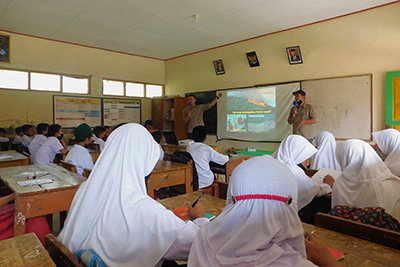
7.Reducing Human and Sumatran Elephant Conflict through Community Participation
Conflict is occurring in the Padang Sugihan Wildlife Reserve as elephants ravage local crops and cause injury to humans. By activities such as skill development of local groups, programs will be conducted focusing on people toward the protection of Sumatran elephants and their coexistence with residents.
Belantara Foundation/Indonesia
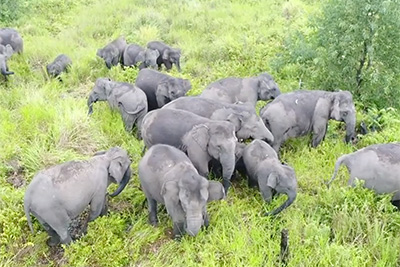
8.Project for Promoting the conservation and sustainable use of mangrove forests on the north coast of Java, Indonesia
The Indonesian government has taken up the recovery of mangrove forests as a national problem. This has attracted the interest of domestic and foreign companies. In addition to collecting the necessary information for mangrove recovery, this project will conduct a pilot restoration site.
Japan Environmental Education Forum/Japan
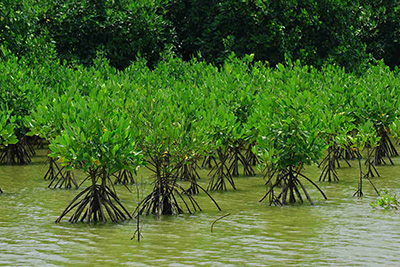
9.Collaborative Efforts for Conservation of Arabela-Schwaner Orangutan Population, Indonesian Borneo
The forests that are the habitats of the Bornean Orangutan face the risks of elimination or degradation. The health of the largest population: which is located in the Arabela-Schwaner region of Central Kalimantan, will be grasped, and management measures will be conducted in cooperation with holders of tree cutting rights, the local government, the national government and environmental conservation organizations.
Orangutan Foundation/Indonesia
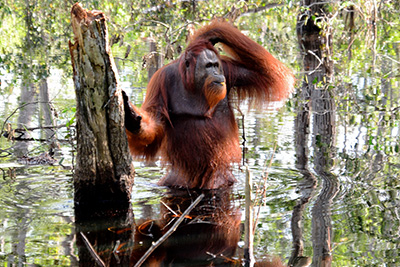
Thailand
10.Young Forest Restorers
Based on the results of its 25 years of research, Chiang Mai University is conducting training for local junior high school students in forest restoration and cultivation and establishment of seed-beds, etc. as part of the forest ecosystem biodiversity restoration project.
Forest Restoration Research Unit, Chiang Mai University /Thailand
Philippines
11.Stop illegal hunting of the endangered species Grey-faced buzzard at Dupax in the Philippines
The Grey-faced buzzard is a rare raptor that migrates between Japan and the Philippines. However, a significant portion of the birds are captured in Dupax, a stopover point located in the middle part of Luzon island in the Philippines, which has a tradtional hunting method. The successful activity of the Sachez-Mira municipality of the island will be utilized in efforts to eliminate illegal hunting.
Japanese Society for Preservation of Birds/Japan
12.Scaling up and strengthening the network of marine protected areas in the North Philippine Sea
The Philippines is known as being a biodiversity hotspot. However, it faces large challenges regarding the management of its coastal resources. To deal with the destruction of habitats and the deteriortion of the fishing industry, Numerous measures are being taken, including the establishment of protected marine areas. The current project strives to make the protected marine areas effective biodiversity and social networks.
Daluhay Daloy ng Buhay, Inc/Philippines
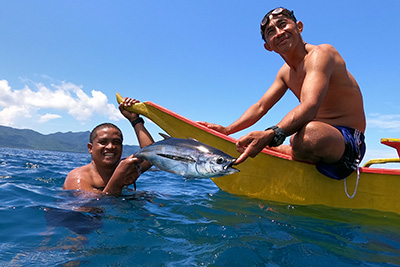
13.CONSERVING AGROBIODIVERSITY OF NUTRITIONAL IMPORTANCE IN SCHOOLS
Agrobiodiversity refers to the biodiversity of plants and animals that are directly and indirectly used in food production and farming, and it is an important structural factor in the sustainability of the food production system. The current project takes place in the 5 provinces of Calabarzon in the Phillipines, establishes a crop museum in connection with local schools, and will conserve the important agrobiodiversity from the standpoint of nutrition science.
International Institute of Rural Reconstruction (IIRR)/Philippines
Viet Nam
14.Nature education and public engagement for the recovery of the endemic Critically Endangered Vietnam Pheasant Lophura edwardsi
The Vietnamese Pheasant is believed to be extinct. To restore the species it is necessary to make preparation to reintroduce them into their habitat. Thus, the cultivation of human resources is essential, and a Nature Education Center will be built, and an environmental education program will be be developed and conducted together in cooperation with the local schools and the conservation breeding center.
Viet Nature Conservation Centre/Viet Nam
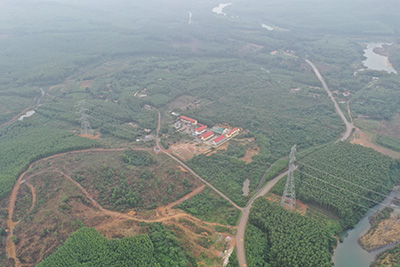
15.Promote community-based forest management and restoration for ethnic minorities
70% of the the A Luoi district in is covered by natural forests and local residents are dependent on the forests for their livelihoods. In addition to the building and introducing a community-based forest management model, an income producing model including products such as mushrooms will be developed.
Ham Long Research and Support Centre for social work/Viet Nam
Malaysia
16.Support program for development of ecotourism for economic independence of natives through ecological research of flora and fauna around planted forest area
As a result of 25 years of activity to restore tropical rainforests in the suburbs of Kuching, little by little rare plants and animals are returning. In the current project, in addition to an ecosystem survey being conducted in the Sabal forest reservation area in cooperation with the University of Malaysia Sawarak, the goal is to support the economic indepence of the local people though development of ecotourism.
NPO BORNEO RAINFOREST REFORESTATION PROJECT/Japan
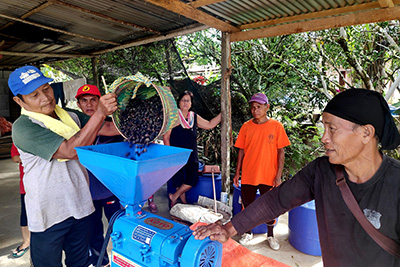
17.Ecological research and conservation activities of wild orangutans in the Danum Valley, Malaysia
The Sabah Danum Valley Conservation Area is a Class I Protection Forest Reserve, and is a habitat for a large number of wild orangutan . In order to maintain the population, in addition to popularizing educational efforts aimed at the related parties, activities to revive the tourist industry will also be conducted.
Japan Orangutan Research Center/Japan

Cambodia
18.The crane rice production & conservation of Sarus Crane in Cambodia
Cambodia’s Anlung Pring Protected Landscape (APPL) is an area of rich biodiversity that is designated as a Sarus Crane reserve. However, the excessive use of pesticides is causing damage to human health and worsening of the area’s biodiversity. Based on Japan’s activity in supporting the restoration of endanged species such as the Oriental White Stork through low-pesticide rice farming, the Sarus Crane is being promoted as a symbol of sustainable agriculture.
BirdLife International Tokyo/Japan
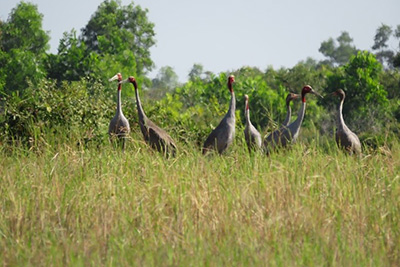
Laos
19.Project for environmental conservation through support for management of common resources in Sekong province in Lao P.D.R.
Centered in the western part of Sekong Province, due to the expansion of plantations, etc. over the last 20 years forest area has decreased by 15%. This is despite the fact that the forests are the base of the livelihoods of the local residents. The aim of the project is for local residents to consider the value of natural resources, and gain the knowledge necessary for sustainable conservation.
Japan International Volunteer Center/Japan
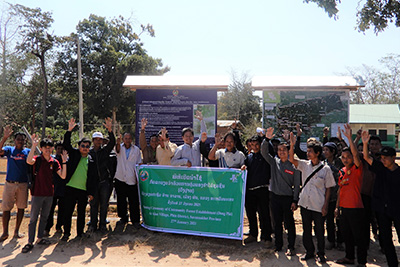
India
20.Sustainable eco-system restoration and management by local communities in Chilika Lake, Odisha India
Chilika Lake is the largest brackish-water lake in Asia and has rich vegetation. However, the ecosystem suffered a large impact due to cyclone Fani in 2019. In addition to restoration of the ecosystem through mangrove tree planting, an environmental education center will be built, and education concerning disaster prevention and reduction using the ecosystem (Eco-DRR) will be conducted, towards rebuilding the regional community.
PALLISHREE/India
21.Blue carbon greening initiative in Ramsar Point Calimere wetland in Tamilnadu India
RAMSAR wetland Point Calimere in Tamilnadu is an area rich in biodiversity. However, the cyclone of 2018 caused great damage that included sweeping away much of the mangrove forests. River restoration will be conducted to secure the flow of salt water into the mangrove forest area, and efforts will be made to improve the ability of local residents to improve their livelihoods through the traditional fishing industry.
DHAN (Development of Humane Action)Foundation/India
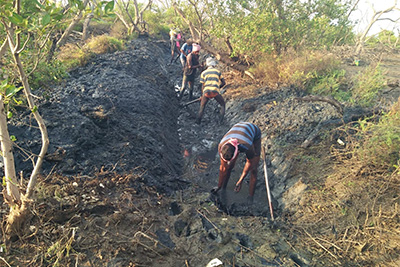
22.Building Climate Resilient Socio Ecological Production Landscapes (SEPLs) in India
Kerala State, which is located at the western tip of the Indian peninsula, had suffered serious impacts due to the influence of climate change, and the ecosystem has been greatly affected. With the involvement of the local governments, mapping of ecosystem deterioration will be carried out, and best practices will be documented on a national level towards creation of an “Action Scenario”, aiming to encourage a paradigm shift.
M. S. Swaminathan Research Foundation /India
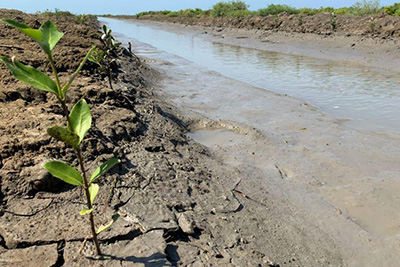
Bangladesh
23.Promoting Sustainable Management of Bio-diversity in Teknaf Peninsula by the covid affected people.
Previously, the Teknaf peninsula of the Coxbazar district had abundant biodiversity in wildlife and fish, etc. However, due to overuse of forest resources and destructive fishing practices the area is now devastated. This project will contribute to the restoration of biodiversity by educating the local residents regarding sustainable resource use.
Bangladesh POUSH/Bangladesh
Pakistan
24.Implementation of Qurumbar National Park’s Management Plan: conserving snow leopards and alpine wetlands
Qurumber National Park (QNP) is an alpine wetland system that is home to a variety of rare wildlife such as snow leopards and brown bears. A management plan will be drawn up for the park, and based on the plan, preservation of wildlife, measures to improve livelihood, respond to climate change and realize responsible tourism will be conducted.
World Wide Fund for Nature-Pakistan (WWF-Pakistan)/Pakistan
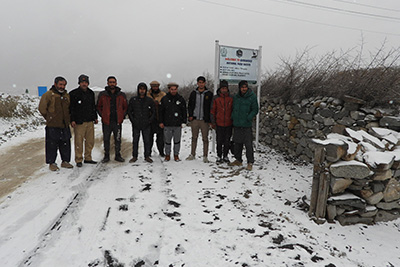
Nepal
25.Building Community Capacity to Protect the Heart of the Himalayas
The Makalu Barun National Park and Buffer Zone Area in Eastern Nepal is called the “Heart of the Himalayas”, has a unique ecosystem and maintains its traditional ecosystem balance. However, livelihood pressures on the Buffer Zone community are building, and in order to conserve the area, the community will be given knowledge and training for sustainable forest management.
Future Generations University/Broad Region/Multi Countries
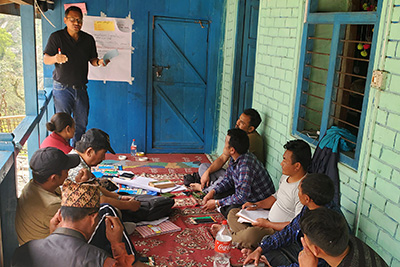
Micronesia
26.Introduction of small size waste-water-treatment system in Yap for nature conservation
Up until the present, KNCF has been working on a sustainable regional development plan for the Yap island Tamil area. Within the plan, response to factors that place the greatest load of the environment: clothes washing wastewater and toilet sewage, is essential. In addition to constructing a wastewater filtration treatment system, efforts will be made to spread it to all islands through cooperation with the related organizations.
ECOPLUS, a registered NPO in Japan/Japan
Samoa
27.Securing the future of Samoa’s threatened botanical heritage – development of a native plants conservation garden (second year)
20% of Samoa’s current plant species are at risk of extinction. Rare plants will be scientifically preserved and to support education efforts, the construction of a national botanical preservation area is being considered. The survey, coordination and plan-making for this construction goal will be advanced.
Botanic Gardens Conservation International/Broad Region/Multi Countries
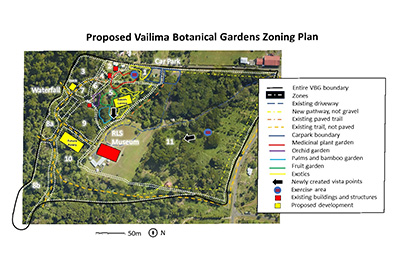
Ecuador
28.Saving the endemic Scalesia cordata from imminent extinction in Galapagos
The numbers of the Scalesia cordata, an endangered native plant of the southern area of Isabela Island in the Galapagos Islands, have been greaty reduced due to changes in land use, volcanoes, and invasive foreign species. Is is estimated that the Scalesia cordata will disappear in 10 years if nothing is done. The population will be restored by planting and control of invasive species.
Charles Darwin Foundation/Ecuador
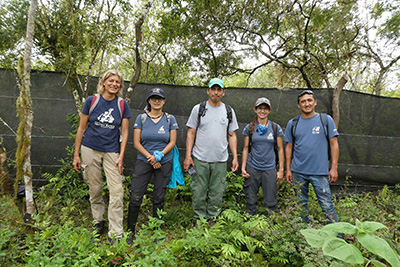
Kenya
29.Saving Mau forest in Kenya & endangered wildlife species living within through restoration,protection & community holistic approach
The Mau Forest in the Rift Valley in Kenya is the largest forest ecosystem in East Africa. While it has an abundance of native species, decay is occurring dur to the illegal tree cutting, agricultural land development, forest fires, etc. Restoration and conservation efforts will be made through environemental education of the local residents, establishment of a nursery garden, and planting of native species.
Biodiversity Conservation Organization/Kenya
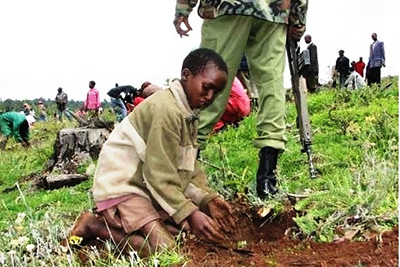
Rwanda
30.Improving Landscape restoration in the vicinity Gishwati-Mukura Forest Reserve
The Gishwati-Mukura forest of the Ngororero districts has decreased in size by 97% over the last last 20 years. To prevent further decline, the Rwandan government has designated it as a national forest. To prevent soil erosion around the park, agroforestry will be promoted, a seedling nursery will be established and continuous planting will be conducted.
Community Road Empowerment/Japan

Malawi
31.HONEY PRODUCTION, CLIMATE RESILIENT AGRICULTURE AND TREE PLANTING FOR DZALANYAMA FOREST BIODIVERSITY CONSERVATION-PHASE 2
The Dzalanyama Forest reserve in the suburbs of the capital city of Lilongwe is a biodiversity hotspot. However, tobacco cultivation, brick burning, firewood and charcoal production have degraded the forest. Miombo trees will be planted, and in addition to bee-keeping and honey production, experimental farming will be conducted toward achieving sustainable farming.
Centre for Child Development and Research/Malawi

Broad Region/Multi Countries
32.Next-generation human resource development project for biodiversity conservation in Asia-Pacific region aiming to expand the results of SATO YAMA UMI project
Keidanren Nature Conservation Fund 25th Anniversary Special Fund Grant aims to achieve the largest results from its sponsored projects. Activities include efforts to increase the knowledge base of users, attainment of practical skills by Japanese users dispatched overseas and the acceptance of members of foreign NGOs for training inJapan.
Japan Environmental Education Forum/Japan
33.Practice and Awareness-Raising of Responsible Fisheries Management Using Crab Bank Method in the Bay of Bengal Coastal Countries
The mangroves and the wetland ecosystems such as tidal flats in the Bay of Bengal in the Indian Ocean support the livelihoods of many people. However, the ecosystem is being threatened by development of the upstream areas, excessive resource use and climate change, etc. In response, the 7 nations that share the Bay of Bengal have establised an international wetlands cooperation network and crab banks, and management of fishery resources is being conducted.
Ramsar Center Japan/Japan
34.Role and use of wetlands for climate change adaptation and disaster risk reduction in Japan and Asia
Disaster prevention and reduction based on ecosystems is now a focus of attention. Examples of disaster prevention and reduction in Japan and Asia will be analyzed and data collected, toward the aim of improving the disaster prevention function of wetlands.
Wetlands International Japan/Japan
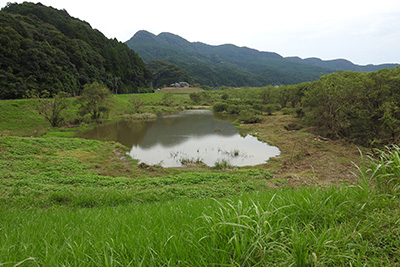
35.CEH-SEA Phase II
A regional hub will be organized for the red list of the coastal ecosystems of South East Asia. Year 1 focused on the mangrove ecosystems, This year, activity will be expanded to tidal flats, marine algae, and sandy beaches, and methods to categorize the coastal ecosystems and evaluate their risk will be formulated.
IUCN/Switzerland
Japan
36.Marine biodiversity and coral reefs conservation project by citizens monitoring and research in Amami-Oshima, World Heritage site
Amami-Oshima, which was registered as a World Natural Heritage Site last year, will create protected area by 2026 to preserve biodiversity. Efforts will be made to achieve createa management system based on cooperation between local residents and businesses. Also, in cooperation with young people, information gathering and development of a tourism-oriented program will be conducted, in addition to popularization and educational activities.
The Nature Conservation Society of Japan/Japan
37.Development of Cray fishes Capture Tool and Practice of control
American crayfish have increased in number in various regions, and are exerting a severe impact on ecosystems. In response, a capture device was developed in 2016. Various modification have been made, and efficient capture has now become possible. In this project, experiments with the capture device are conducted in varying environments. In addition to nationwide introduction of the capture device, strategies to use the capture device for effective, long-term prevention are now being examined.
Society for Shinaimotsugo Conservation/Japan
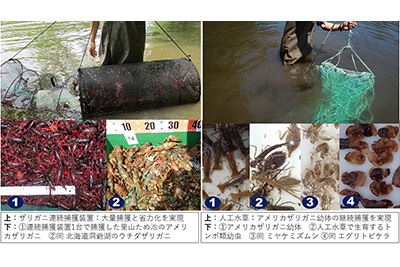
38.Revival of biodiversity-rich sandy beaches
The Enshu Nada Hamamatsu Beach in Yokohama City is a spawning ground for the endangered Loggerhead turtle, and is a sandy beach with abundant biodiversity. However, in recent years the sandy beach is shrinking, and is being degraded by problems such as plastic trash. An environmental survey will be conducted, and the restoration of the sandy beach and shore management will be examined. A preservation plan that respects the ecosystem will be presented to the city government.
Specified non-profit organizationSanctuaryN.P.O/Japan
39.Native sapling production and planting project: rescue of satoyama forest damaged by the Great East Japan Earthquake (Nickname; Seed project)
The “Satoyama Rescue/Regional Sapling Production Network” formulated by educational organizations in Nagano prefecture and Miyagi Prefecture (elementary/junior/senior high schools and universities) is conducting regional sapling production and planting. Also, Seaside protection forests and satoyama forests in Yamamoto Town, Miyagi Prefecture are being restored. The above activities will be used as the basis for an environmental education program and workshop to contribute to the development of the young people who will lead the next generation.
The Great East Japan Earthquake-destroyed satoyama forest rescue network /Japan
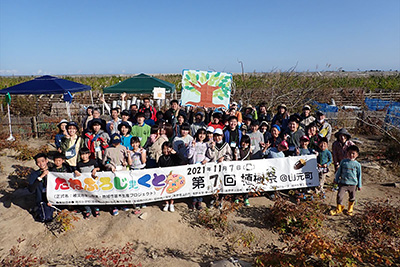
40.Human Resource training, Nature Recovery and Management, and Nature Experience Activity in disaster struck areas.
This is a project in the local governments of northern Nagano Prefecture and in Higashi Matsushima City in the eastern part of Miyagi Prefecture, areas that suffered damage from typhoons and earthquakes. Centered around children, forest and wetland restoration activities that promote psychological healing such as nature experience and forestry therapy programs will be conducted, along with activities cultivate environmental conservation leaders.
The C.W.Nicol Afan Woodland Trust/Japan
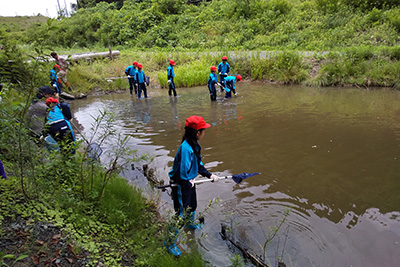
41.Support and public awareness campaigns for countermeasures of invasive cat problems for conservation of island ecosystem in the Natural World Heritage Sites and others in Japan
The domestic cats which are designated as the subject of “Urgent response invasive species” , are popular animals. However, they become the source of wild cats, which are the most difficult animal to deal within invasive species. In particular, in the especially important island ecosystem, their impact on rare animals is extremely large. A cross-regional communication exchange network will be formulated, and educational activities directed at local residents will also be conducted.
Invasive Cat Research Japan/Japan
42.Capacity Development for Japanese and Asian NGOs toward implementation of Post Global Biodiversity Framework(2nd Year)
A structure for developing human resources that can effectively participate in the international process concerning biodiversity (Biodiversity treaty, IUCN assembly, etc.) and the cooperative system in Asia. This will make it possible to contribute to future biodiversity coordination promotion efforts in Asia.
Japan Committee for IUCN/Japan

43.Citizen monitoring survey in land and sea areas that contribute to the conservation of Shiraho coral reefs in Ishigaki island
In Shirahao Village in Ishigaki Island, the coral reef is referred to as the “Treasure of the sea” and “Second only to life in importance”, and on an regional level is involved in activies to pass on the treasures of the ocean to the next generation. Activities include measures to prevent red soil from flowing into the coral by planting a green belt, and scientifically monitoring the effect of the planting and the condition of the corals in a systematic manner.
Natsupana/Japan
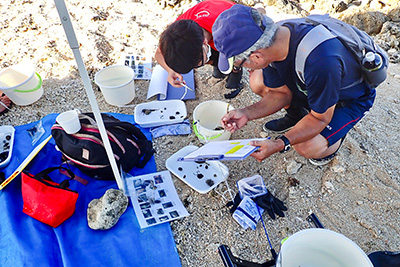
44.Establishment of a platform for the conservation of Geese species in East Asia and multilateral evaluation of their extinction risk
Based on the platform created by Japanese researchers, concerning the risk of extinction of geese, In cooperation with the research agencies of various Southeast Asian countries the cultivation of young researchers and multinational evaluation activities will continue.
Japanese Association for Wild Geese Protection/Japan
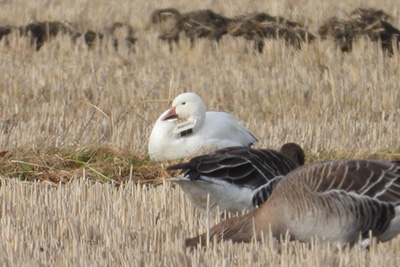
45.Regeneration of Waterside Eenvironment and implementation of environmental education programs with the participation of diverse stakeholders
Targeting the Miyakozawa wetland and the Ramsar Convention wetland Oyama Shimoike, based on the participation of various stakeholders, activities to restore the lost biodiversity, monitoring, and and environmental education will be conducted. Also, a new proposal regarding “The connection between people and wetlands” will be conducted.
Shonai nature museum design promotion council/Japan
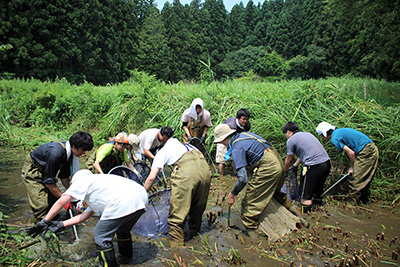
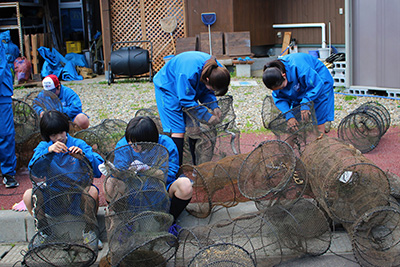
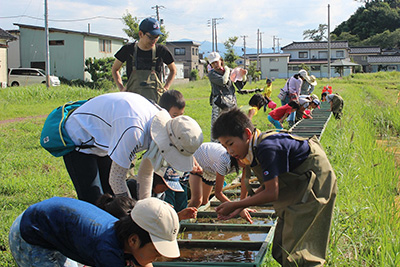
46.Generalization and collaboration of animal-pathways
Roads and other continuous infrastructures that divide forests are barrier (obstacles) for wild animals such as the Japanese squirrel and the Japanese dormouse (the target of our association is arboreal animals) , and these lead to animals’ extinction by road-kill and damage local genetic diversity. Animal pathways from Mt. Fuji and the Yatsugatake mountains can serve as tools for highlighting the importance of infrastructure for wildlife.
Animal-pathway & Wildlife Association/Japan
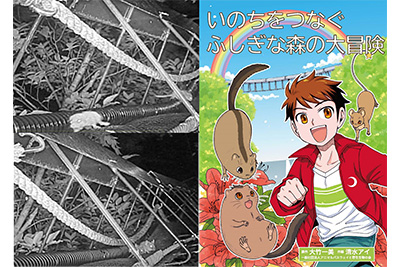
47.Investigation of Japanese Cranes magiration and breeding in northern Hokkaido
The breeding grounds of the Japanese crane in eastern Hokkaido are in a state of saturation, and in the case of infection, etc. there is the possibility of mass deaths of birds. To prevent this, dispersion of the breeding grounds is necessary.To realize this objective, the conditions of the migration in the northern areas and the status of breeding will be grasped.
Non-profit organization Sarobetsu Eco-network/Japan
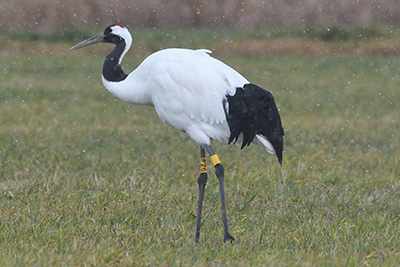
48.Conservation of Shorebirds including critically endangered Spoon-billed Sandpiper, promoting for registering of Kumagawa Estuary as Ramsar-site, gathering awareness for “Natural Flow of Water”.
Kumagawa estuary in Yashiro City has one of the tidal flats designated by the Ministry of the Environment as an important stopover site for the critically endangered Spoon-billed Sandpiper. If it is designated as a wildlife protection area, and if it receives the approval of the local community, it has the possibility of becoming a Ramsar Convention site. The importance of not blocking “the natural flow of water” through dikes, etc. will be publicized, and Ramsar Convention registration will be targeted as a goal.
Ramsar Network Japan/Japan
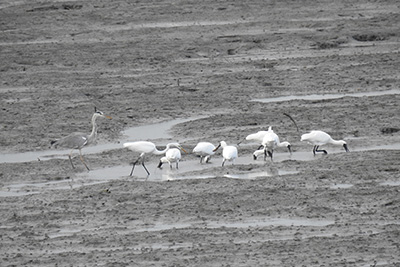
49.Survey on breeding aspects and conduct of protection measures for conservation of Eastern marsh harrier as a endangered bird species.
The Sarobetsu Wilderness area is the largest domestic breeding ground of the endangered Eastern marsh harrier. However, the breeding conditions are not well-understood, and large-scale wind power generation plan is under advancement, which serves as an impediment to breeding activity. Publicizing this situation among the local residents and obtaining the understanding of the government is necessary for protection activities.
Wild Bird Society of Japan/Japan
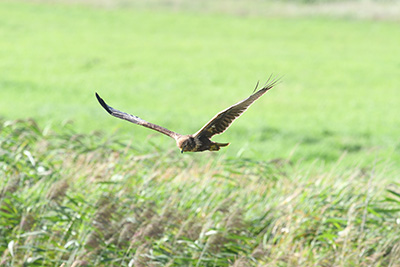
50.Development and dissemination of biodiversity and SDGs education for companies -Adding an ESG perspective-
Amidst the crisis of biodiversity loss, and the progress of global warming, efforts using citizen science targeting businesses will be made to achieve a sustainable society by the following methods: (1) Research on methods of conducting biodiversity education and execution/evaluation/popularization will be conducted; (2) For businesses that will undertake SDGS, human resources cultivation research /evaluation/popularization; (3) publication of results.
Dormouse & Wildlife Institute/Japan
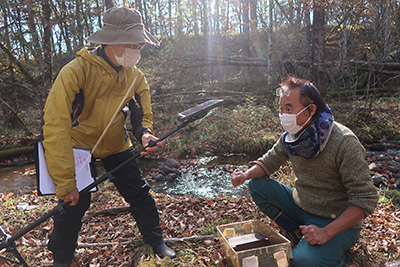
51.Nature conservation activities and human talent iscultivated centered on “Forest of Zephyrus at Mt.Mikusa
The “Forest of Zephyrus at Mt. Mikusa” in Osaka prefecture is a habitat for the Favonius cognatus, etc. and possesses an abundant natural environment. However, recently this environment is rapidly being lost. In addition to efforts to prepare a satoyama environment, nature observation and rice planting events will be held as popularization activities.
Foundation of Osaka Green Trust/Japan
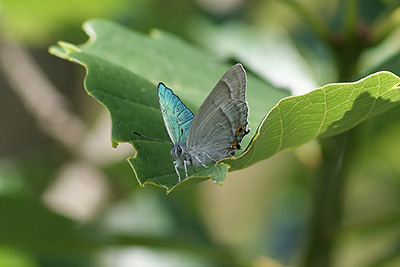
52.Project of Moving Black Bass Problems (Bass Fishing Rights,Illegal Release,etc)Forward
Black bass were designated as specific alien species in Invasive Alien Spicies Act, but actual execution had not been conducted. In order to solve this this problem, written requests will be made to the Ministry of the Environment and relared ministries, and educational activities will be undertaken to obtain the understanding of the general public (Newletters, online study groups, etc.) .
All Japan Network of Citizen’s Groups Preventing Black Basses/Japan
53.Habitat restoration for Japanese crested ibis corresponding to the new action plan of its reintoroduction to the wild
In Sado Island, since 2002 we have have advanced the reintroduction of Japanese Crested Ibis in the wild. Currently, the population has increased to 430 birds, who are mainly inhabiting plains. Conflicts with farmers and insufficient feed have been problems. We will prepare a comprehensive biotope to cover roosting/nesting trees/feeding grounds, and deal with various problems, such as the expansion of the habitation areas to the east and the north.
Tokidoki Ohendan/Japan
54.Promoting Green infrastructure through urban-rural food and agriculture cooperation
In Toshima City, regarding agriculture and food, the traditional vegetables are being utilized in the development of green infrastructure acitvity. Also, in places like Matsubushi Town in Saitama prefecture, activities in farming villages with which it has connections are utilized to promote coordination between urban and farming communities, toward the realization of conservation of biodiversity and vital regional communities.
Toshima Green Infrastructure Network/Japan

55.Building Capacity Through the Restoration of SEPLS in Rural Japan
With The abandoned rice fields in Oga City as the targets, efforts are being made to restore satoyamas, and achieve the preservation of biodiversity and green economy. Also, by involving the local people in the various activities, progress will made toward the goal of building a society where people and nature coexist.
Conservation International Japan/Japan
56.Development of biodiversity education and SDG education through dormouse research and conservation
While the Japanese dormouse is a natural treasure, it is also an animal that is distributed in batches and needs urgent protection. For its protection, basic research is vital, and is being in conducted through coordination between Kyoto University and Fukuyama University. Also,the research results can be used for education that supports SDGs, and efforts will be made for human resource cultivation.
Japanese Dormouse Protection Research Group/Japan
